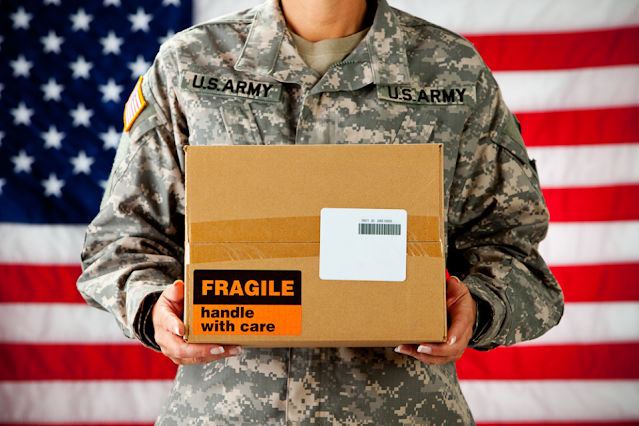Do you know a Service Member who is deployed or preparing to deploy? Sending a care package filled with someone’s favorite treats can be a great way to show you care and to boost morale. When you choose food and snack items, consider not only what your recipient enjoys eating, but also what will keep them optimally fueled for mission readiness and success.
Performance nutrition in a package
There are many non-perishable and nutrient-dense snacks you can send to a deployed location. Some of the most popular items include:
- Low-fat popcorn
- Fruit-and-nut trail mix
- Nuts
- Seeds
- Whole-grain crackers
- Jerky
- Plain oatmeal packets
- Individual pouches of peanut or almond butter
- Low-sugar, whole-grain cereal cups
- Microwaveable cups made with whole-grain quinoa or brown rice
- Individual pouches of tuna, salmon, or chicken
How to include fruits and vegetables
Depending on the deployment location, fresh fruits and vegetables might be hard to come by. You can’t send fresh produce in a care package, but you can send dried or dehydrated options. These foods are often just as nutritious as their fresh counterparts. Just be careful of extra ingredients such as added sugar, salt, or fats. Consider some of the following ideas:
- Dried fruit such as raisins, dates, apples, apricots, or prunes
- Dehydrated fruit such as berries or mango
- Dried chickpeas
- Roasted soybeans
- Dehydrated veggie chips such as kale, broccoli, beet, or carrot
Snack bars
Snack bars are another popular food item for care packages. Among the many brands and varieties, you’ll find that their nutritional value can vary greatly. When you choose a snack bar, opt for those sweetened with dried fruit such as dates or figs instead of added sugar. Other nourishing ingredients to look for include:
- Oats
- Nuts
- Seeds
- Nut butters
- Whole grains such as quinoa, brown rice, millet, or barley
- Legumes like lentils or soybeans
- Dried fruit
For protein bars, smart choices include naturally occurring protein from nuts, seeds, legumes, or egg whites, as well as whey protein or plant proteins such as pea protein. Note that bars or any snacks containing hemp are prohibited for use by Service Members.
Beverage options
You can’t send liquids in a care package, but there are still some beverage options you can include. Tea bags, instant coffee packets, and water flavor enhancers travel well and only need water to be added. Try to avoid added sugars or other stimulant ingredients such as caffeine. If you’re worried about artificial sweeteners, choose flavor enhancers sweetened with stevia or erythritol.
 Looking for tips to personalize your care package? Learn More
Looking for tips to personalize your care package? Learn More
Before you ship
Consider any shipping limitations before you pack and ship food items. The U.S. Postal Service’s military shipping restrictions provides information specific to your Service Member’s unique APO/FPO/DPO zip code. Some items to avoid are liquids and perishable items. Also consider the climate your package is going to. For example, chocolate easily melts during hot weather. Military OneSource provides even more tips for sending care packages. Keep in mind that care packages often experience rough handling and can take weeks to reach your loved one.
Debrief
Food availability in deployed environments can vary greatly, so care packages filled with snacks are often a welcome surprise for those deployed overseas. It’s certainly okay to include some treats in a care package, but make most of it a variety of nourishing snacks to help fill up and fuel your Service Member.





